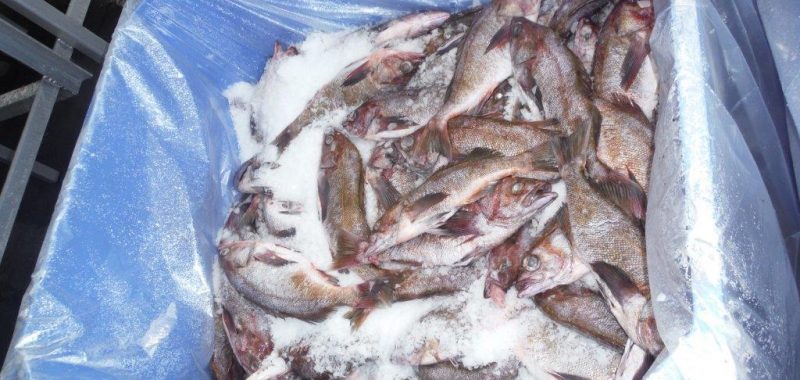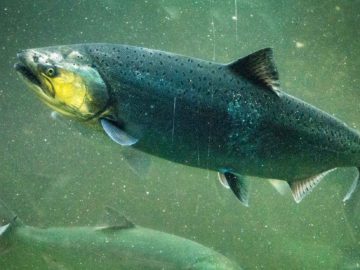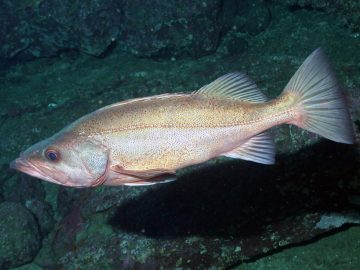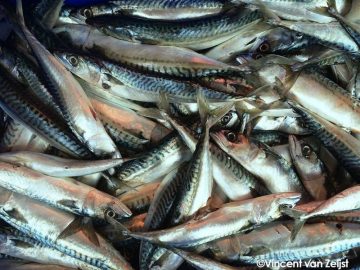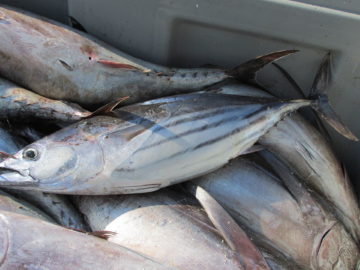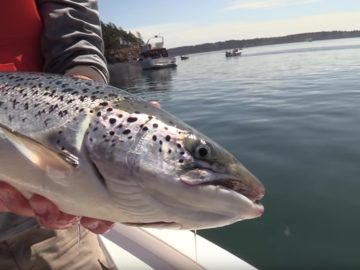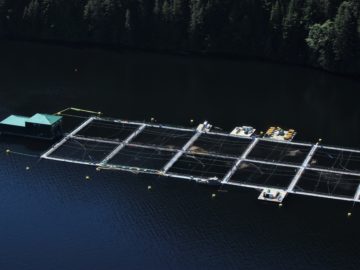DFO’s assessment suggests stock sustainably fished, but numbers well below unfished levels.
Two months ago, DFO quietly published a long overdue stock assessment of widow rockfish. Despite having been an important component of the groundfish trawl fishery since at least the mid 1960s and considered BC’s fourth largest rockfish fishery, widow rockfish has never received a proper stock assessment. Lack of an assessment was the main reason why widow rockfish was classified as “red” or “Avoid” under Seafood Watch recommendations and has been one of SeaChoice’s priority species.
When widow rockfish is re-evaluated by Seafood Watch in the coming years it will likely improve in rank to a “yellow” (Good Alternative) or “green” (Best Choice), thus becoming a “buy” option. The DFO stock assessment indicated that there was a high likelihood that the population was above DFO’s reference point for being in the healthy zone (see report figure below). Widow rockfish is primarily captured through mid-water trawl gear, which incurs no habitat damage and typically less bycatch than a bottom trawl. These characteristics further contribute to its positive sustainability scores.
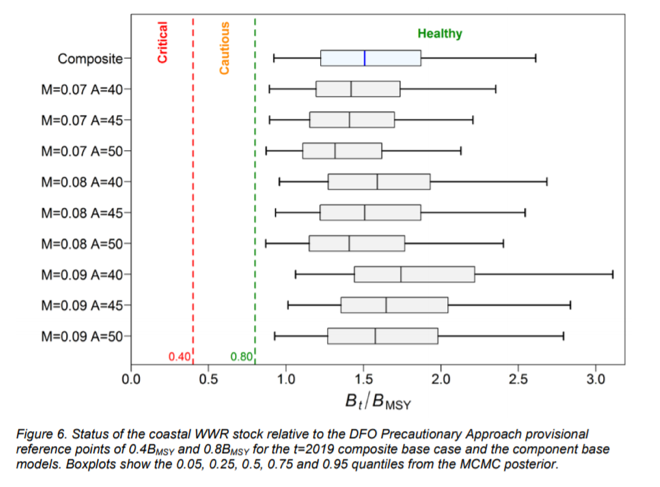
All of BC’s large volume rockfish species including Pacific ocean perch, yellowtail, silvergrey, canary, redstripe and yellowmouth are now all being fished at DFO defined sustainable levels with assessments (although some outdated) to back this up. There are still several smaller volume rockfish species without assessments including rougheye, shortraker and darkblotched rockfish.
This is generally positive news but it does require some additional consideration. The concept of “sustainable”, when it comes to a wild fishery interacting with an ecosystem, is difficult to pin down. A deeper dive into the uncertainties and nuances of all these rockfish assessments indicates a high degree of precaution is required when carrying out rockfish fisheries. All of these fisheries are “sustainably” targeting greatly reduced populations with skewed age structures (older fish are less frequent in the populations). The harvest rate is such that a “sustainable” yield is being maintained but by no means are the populations close to their historical non-fished abundance, carrying out the same pre-fishery ecological roles, and unlikely maintaining their genetic diversity.
The harvest rate is such that a “sustainable” yield is being maintained but by no means are the populations close to their historical non-fished abundance, carrying out the same pre-fishery ecological roles, and unlikely maintaining their genetic diversity.
With the exception of redstripe rockfish, all of BC’s rockfish species populations with catch quotas (~15) are far below what is estimated to have been the “unfished” abundance levels. Canary rockfish is only 22% of it’s estimated historical abundance and Pacific ocean perch about 30%. For long lived species, this depletion rate qualifies them as “Endangered” under criteria used by the IUCN or COSEWIC.
The opposing scientific perspective where a fish that qualifies as an endangered species can also be the target of a sustainable fishery has been enabled by the tightly held fisheries management concept of maximum sustained yield (MSY). This concept stems from a time when fisheries scientists believed that the trajectory of a fished population was predictable and that the population would be more productive per unit of fish when their numbers were intentionally lowered through catching them. However, even DFO’s stock assessment scientists have agreed that MSY targets may not be appropriate for long lived low productivity species – such as rockfish. Unfortunately, there are no broadly accepted alternative approaches.
Increasingly the use of marine protected areas and refugia are gaining recognition as a means of mitigating the uncertainty associated with traditional fisheries management. There is currently an MPA network being developed for Canada’s Pacific waters. If properly designed this network can provide additional insurance for fisheries managers responsible for these populations. MPAs in combination with fisheries science, good monitoring and enforcement, and ongoing research surveys can collectively safeguard these populations and maintain a healthy fishery in an ever-uncertain ocean.
DFO and industry deserve credit for moving this challenging fishery toward sustainability but no one should think these fisheries are being undertaken without a persistent risk to biodiversity.
